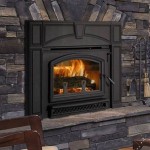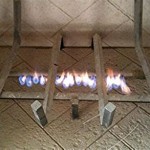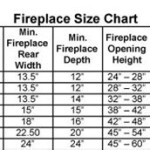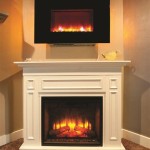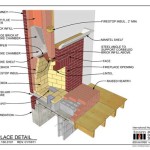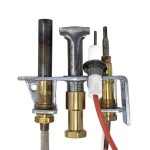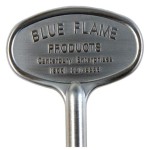Salvaged Fireplace Mantels: A Sustainable and Stylish Choice
Fireplace mantels serve as focal points within living spaces, adding character and architectural interest. Choosing a mantel is a significant design decision, influencing the overall aesthetic of a room. While new mantels are readily available, salvaged fireplace mantels offer a unique and sustainable alternative, bringing historical charm and eco-conscious design principles into modern homes.
Salvaged mantels are recovered from older buildings undergoing renovation or demolition. These architectural remnants often possess details and craftsmanship not easily found in mass-produced, contemporary versions. The process of salvaging and repurposing these mantels reduces construction waste and minimizes the environmental impact associated with manufacturing new materials. This article will explore the benefits of choosing salvaged fireplace mantels, the types available, factors to consider when selecting one, and the methods for incorporating them into a design aesthetic.
The Appeal of Salvaged Fireplace Mantels
Salvaged fireplace mantels possess a distinctive appeal stemming from their history, craftsmanship, and the inherent character they bring to a space. Unlike modern mass-produced mantels, salvaged options often showcase unique detailing, intricate carvings, and the patina of age. This inherent character adds a layer of depth and authenticity that is difficult to replicate with new materials. The following points outline specific reasons why salvaged mantels are a desirable choice:
Historical Significance: Each salvaged mantel carries a history, often originating from homes or buildings built decades or even centuries ago. These mantels represent a tangible connection to the past, offering a glimpse into previous architectural styles and design trends. Owning a salvaged mantel allows one to incorporate a piece of history into the present-day home. This historical aspect can be particularly appealing to homeowners seeking to enhance the character and authenticity of their living spaces.
Unique Craftsmanship: Traditionally, fireplace mantels were crafted by skilled artisans using techniques that are less common today. Salvaged mantels often display intricate hand-carved details, elaborate moldings, and the use of high-quality, durable materials. The craftsmanship inherent in these pieces speaks to a level of dedication and attention to detail that is often lacking in contemporary manufacturing. This unique craftsmanship contributes to the overall aesthetic appeal and value of the mantel.
Sustainable Choice: Selecting a salvaged mantel aligns with sustainable building practices by repurposing existing materials and reducing the demand for newly manufactured products. This reduces the environmental impact associated with resource extraction, manufacturing processes, and waste disposal. Choosing a salvaged mantel is an environmentally responsible decision that supports a more circular economy.
One-of-a-Kind Aesthetic: Due to their age and origins, salvaged mantels are inherently unique. Variations in wood grain, paint finishes, and weathering patterns contribute to their individual character. Finding two identical salvaged mantels is highly unlikely, ensuring that each installation is a distinct and personalized design element. This one-of-a-kind aesthetic allows homeowners to create a truly bespoke living space.
Patina and Character: The passage of time leaves its mark on salvaged materials, creating a patina that cannot be replicated. This patina, which includes wear and tear, subtle color variations, and the development of a natural sheen, adds depth and richness to the mantel's appearance. The aged aesthetic often blends seamlessly with both traditional and contemporary design styles, adding warmth and authenticity to the overall ambiance of the room.
Types of Salvaged Fireplace Mantels
Salvaged fireplace mantels are available in a variety of materials, styles, and sizes, reflecting different architectural periods and design aesthetics. Understanding the different types of mantels is essential for selecting the right piece to complement a particular space. The following provides an overview of common mantel types:
Wood Mantels: Wood is a classic and versatile material for fireplace mantels. Salvaged wood mantels can be found in various types of wood, including oak, pine, maple, and mahogany. The type of wood influences the mantel's appearance, durability, and overall aesthetic. Wood mantels can range from simple, rustic designs to ornate, elaborately carved pieces. The wood's grain patterns and age create a unique look that complements both traditional and modern interiors.
Marble Mantels: Marble mantels exude elegance and sophistication. Salvaged marble mantels, often found in grand homes and historic buildings, showcase the beauty and durability of this natural stone. Marble mantels can feature intricate carvings, polished surfaces, and a range of colors and veining patterns. These mantels add a touch of luxury and timeless appeal to any room. Due to their weight, proper installation is crucial for marble mantels.
Stone Mantels: Stone mantels offer a rustic and natural aesthetic. Salvaged stone mantels can be made from various types of stone, including limestone, sandstone, and granite. These mantels often feature a rough-hewn texture and a natural color palette, adding a sense of warmth and earthiness to the space. Stone mantels are particularly well-suited for homes with a rustic or farmhouse-inspired design.
Brick Mantels: While brick is more commonly used for the fireplace surround, salvaged brick mantels can also be found. These mantels offer a unique and industrial-chic aesthetic. Salvaged brick mantels often feature exposed brickwork, creating a textured and visually interesting focal point. Brick mantels can be painted or left in their natural state, depending on the desired look.
Cast Iron Mantels: Cast iron mantels are less common than wood or stone, but they offer a distinctive and Victorian-era aesthetic. Salvaged cast iron mantels often feature intricate detailing and decorative motifs. These mantels are durable and fire-resistant, making them a practical and stylish choice for period homes.
Styles: The style of a salvaged mantel is deeply tied to historical periods. Common styles include: *
Federal:
Characterized by clean lines, simple moldings, and classical motifs. *Victorian:
Known for ornate carvings, elaborate details, and rich colors. *Arts and Crafts:
Emphasizes natural materials, handcrafted details, and a focus on simplicity. *Mid-Century Modern:
Features clean lines, geometric shapes, and a minimalist aesthetic. *Rustic/Farmhouse:
Highlights natural materials, distressed finishes, and a sense of warmth and informality.Considerations When Selecting a Salvaged Mantel
Choosing a salvaged fireplace mantel requires careful consideration of several factors, including size, condition, style, and safety. A careful assessment ensures that the selected mantel is not only aesthetically pleasing but also structurally sound and compatible with the existing fireplace and room design.
Size and Dimensions: The size of the mantel is a critical factor. The mantel should be appropriately sized for the fireplace opening and the overall dimensions of the room. Measuring the fireplace opening accurately is essential to ensure that the mantel fits properly. Consider the mantel's height, width, and depth to ensure that it is proportional to the surrounding space. A mantel that is too large or too small will look out of place and detract from the room's overall aesthetic.
Condition: Thoroughly inspect the mantel for signs of damage, such as cracks, rot, warping, or missing pieces. While some imperfections can add character, significant structural damage can compromise the mantel's integrity and safety. Evaluate the extent of any necessary repairs and determine whether the cost and effort are justified. Consider whether the existing finish is desirable or if refinishing is required.
Style Compatibility: The style of the salvaged mantel should complement the existing architectural style and design aesthetic of the room. Consider the room's overall theme, color palette, and furniture style when selecting a mantel. A mantel that clashes with the room's existing design will create a disjointed and unharmonious look. Ensure that the mantel's style is consistent with the other architectural elements in the space.
Material Compatibility: Verify that the mantel's material is compatible with the fireplace and surrounding materials. Certain materials, such as wood, may require additional fireproofing measures to ensure safety. Consider the heat resistance and durability of the mantel material, especially if the fireplace is frequently used. Ensure that the mantel material complements the surrounding architectural features.
Safety: Safety is paramount when selecting a fireplace mantel. Ensure that the mantel is structurally sound and free from any hazards, such as loose pieces or sharp edges. If the mantel is made of wood, consider applying a fire-retardant coating to enhance its fire resistance. Follow all local building codes and regulations regarding fireplace mantel installations to ensure compliance and safety.
Installation: Proper installation is crucial for ensuring the safety and stability of the salvaged mantel. Consider hiring a professional contractor or experienced handyman to install the mantel. Ensure that the mantel is securely attached to the wall and that all necessary supports are in place. Follow the manufacturer's instructions or consult with a professional to ensure proper installation techniques.
Cost: The cost of salvaged fireplace mantels can vary widely depending on the material, style, size, and condition of the mantel. Factor in the cost of any necessary repairs, refinishing, or installation when budgeting for a salvaged mantel. Compare prices from different sources, such as architectural salvage yards, antique stores, and online marketplaces, to find the best value. Remember that a salvaged mantel can be a worthwhile investment, adding character and value to a home.
Sourcing: Architectural salvage yards are often the best places to find salvaged mantels. These yards typically have a wide selection of mantels in various styles and materials. Antique stores and online marketplaces, such as eBay and Etsy, can also be good sources for salvaged mantels. When purchasing a salvaged mantel online, request detailed photos and descriptions to assess its condition and suitability. Contact local historical societies or preservation organizations for leads on potential sources for salvaged mantels.

Vintage Fireplace Mantel Recycling The Past Architectural Salvage

Restoration Resources New England S Primary Source For Authentic Architectural Antiques Wood Mantels Section

Antique Wood Marble Carved Fireplace Mantels Oley Valley Architectural Antiques

Architectural Salvage Old Mantle

Antique Wood Marble Carved Fireplace Mantels Oley Valley Architectural Antiques

Antique Mantels

Old House Parts Company Architectural Salvage Antique Windows And Doors Hardware For Interior Exterior Home Improvement

Antique Fireplace Mantel 70 X 100 The Door

Old House Parts Company Architectural Salvage Antique Windows And Doors Hardware For Interior Exterior Home Improvement

Antique French Limestone And Marble Fireplace Mantels For Interiors Historic Decorative Materials A Division Of Pavé Tile Wood Stone Inc


